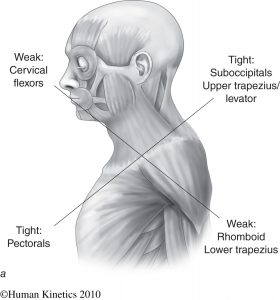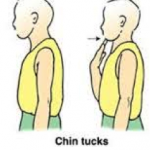Call today: 416-906-0767
Custom Orthotics
Having arch pain? Heel pain? Get your feet assessed to see how orthotics can help give you the support you need. Along with your chiropractic care, custom orthotics are effective devices to help with ankle proprioception and provides support for all three arches of the feet! Email or call to arrange your custom orthotics appointment. New patients are required to first book an initial assessment. The orthotics appointment includes the biomechanical assessment, gait analysis, and 3D foot scan by Footlevelers scanner. All documents are provided upon dispensing the orthotics for insurance purposes.
email: dr.mdavidovic@gmail.com
416-906-0767
Been in a motor vehicle accident? Have Whiplash?
 Have you been in a motor vehicle accident as a driver, passenger, cyclist or pedestrian?
Have you been in a motor vehicle accident as a driver, passenger, cyclist or pedestrian?
Even if you haven’t felt immediate pain after a car accident, you may start to feel pain 24hours or even weeks post collision. Whiplash can present itself with minor, moderate or severe symptoms. It is very important to report the accident and seek appropriate care. If you have been in a car accident, you are automatically eligible for coverage under the Ministry of Injury Guidelines. Book your initial examination to ensure you recover and continue to lead your pre-accident life in a healthy state. I offer a caring environment with evidence based care and rehabilitation to assist in recovery.
Involved in a motor vehicle collision? call or email today to get the help you need and deserve.
call 416-906-0767 or email dr.mdavidovic@gmail.com to book your assessment now. Visit www.drmdchiropractic.com
Dr. Maria Davidovic Chiropractic
1246 Yonge St. Suite 303
Toronto, ON M4T 1W5
416-906-0767
dr.mdavidovic@gmail.com
Do you have neck pain? Here’s a simple neck core exercise to the rescue!
 Neck pain is quite common, especially with postural strain due to prolonged computer use, “text-neck“, injury or trauma to the neck etc. The postural strain sets us up for a weaker neck core. You’ve seen this rounded shoulders “slumped posture”. This posture involves tight pectoral muscles, tight suboccipitals (muscles at the base of the skull), upper traps and levators, stretched weak lower-trapezium/rhomboids, and right in the middle, a weak neck core.
Neck pain is quite common, especially with postural strain due to prolonged computer use, “text-neck“, injury or trauma to the neck etc. The postural strain sets us up for a weaker neck core. You’ve seen this rounded shoulders “slumped posture”. This posture involves tight pectoral muscles, tight suboccipitals (muscles at the base of the skull), upper traps and levators, stretched weak lower-trapezium/rhomboids, and right in the middle, a weak neck core.
Why is this bad? Well, this isn’t your ideal posture because your head and vertebrae shift forward and this imbalance places greater stress on your spine, ligaments, tendons, and muscles, predisposing you to pain and degenerative changes (arthritis).
How can chin tucks help?
Chin tucks are a way to re-activate the deep neck core flexors (longus capitis/colli muscles) that support your spine. When the neck core has endurance, it lasts longer to support the structures that help support your head, creating less muscle strain of the more superficial muscles like the upper traps.
Like with any exercise, there are progressions. You need to start out with the basics and then increase the level of difficulty/resistance. In this blog, we will start with a basic chin tuck. If you experience pain while attempting this, please email Dr. Maria Davidovic to arrange your initial chiropractic visit or follow-up to ensure you aren’t re-aggravating any underlying issue.
Chin tucks: Pull your head straight back keepings eyes and jaw leveled and hold for 5 seconds, then release. Do 10-15 repetitions slowly and you can do 2-3 sets per day.

If you would like to learn more about how to improve your posture, feel free to email dr.mdavidovic@gmail.com or call 416-906-0767 to arrange an appointment with Dr. Maria.
Chiropractic care and therapeutic exercise – why do them together?
Have you been injured? Is the healing process taking too long? Take a good look at what your active care is made up of. First off, are you active? And, in which ways? It could be your “core” strengthening exercises are actually NOT spine-friendly, and are potentially setting you up for re-injury.
Spine-friendly therapeutic exercise
I always suggest a quick review of what exercises someone is doing on the regular. Possibly tweaking a few of the exercises if they aren’t joint-friendly. The goal is to build the endurance of the core muscles in a way that won’t lead to re-injury. Chiropractic treatment, like the adjustment, is considered “passive care.” Passive care is when you are resting on a treatment table while you are treated. “Active care” is when exercise, such as strength training, is incorporated into the treatment.
Information on how to prevent injuries is provided to help decrease future painful accidents. The passive care is used to help re-align your spine so it’s in optimal condition.
Education on injury prevention strategies may assist in faster recovery. Therapeutic exercise combined with chiropractic care may decrease the occurrence of future episodes and improve your quality of life.
If you’d like to arrange an appointment, email dr.mdavidovic@gmail.com or call 416-906-0767
Seniors and chiropractic care
Why chiropractic care is important for the aging population
Chiropractic care is important for the aging population because it helps keep the body functioning optimally. Health and mobility are very important to the aging population. Continue reading to find out why 🙂 Loosing your balance can decrease the quality of your life. How so, you ask? Well, slips and falls can lead to serious complications like wrist or hip fracture. Do you recall how it feels to have a joint limitation after a sprain or strain? Imagine how that would feel as a senior citizen. And, imagine how limited you would become with your activities of daily living. Being limited or inactive poses many other side effects like muscle atrophy over time, or social isolation with seniors when they become house bound. Becoming hospitalized after a fracture may pose some serious adverse effects like life-threatening pneumonia. These are all good reasons why keeping mobile and staying active and healthy can prevent something from occurring. Things happen and we all experience injuries but if someone asked you if you could avoid an accident, would you? The answer would be yes. So take the necessary measures to do that starting now.
Chiropractic care focuses on treating neuromusculoskeletal system imbalances, which means addressing areas of weakness to improve strength, proprioception and balance. Chiropractic care may also decrease pain and the frequency of reoccurring pain by addressing spine or extremity limitations with gentle mobilizations/manipulations and muscle release techniques like Graston technique®(see my newsletter regarding this technique).
Rehabilitation and patient education about how to avoid slips and falls
The use of patient education on ways to prevent falls within the home, reassurance, and exercise prescription are very beneficial. Special considerations are made for patients with osteopenia (bone density lower than normal) or osteoporosis in terms of gentle spine and extremity work. Movement is key as weight-bearing activities stimulate osteoblasts (bone-building cells) like resistance training (weight lifting), jumping, jogging/walking depending on a person’s ability. Exercise prescription is made with a gradual progression and dependent on the person’s overall health status. If someone has existing cardiovascular conditions, or other medical conditions, these are taken into account to ensure a safe plan of action is made for any new therapeutic exercise prescription.
Here’s one general household tip and one balance training tip to help with avoiding unnecessary slips and falls. Do not have loose rugs around the house as they slide easily and can cause an accident. Improve your balance by doing a single-leg stand beside the wall or have a chair that you can easily hold on to. Try to keep your balance first with eyes open and then try with eyes closed for up to 30secs to 1min. Gradually open the eyes if you feel too unsteady. You can improve your balance and proprioception doing this simple exercise.
If you’d like to arrange an initial chiropractic appointment, email dr.mdavidovic@gmail.com
or call 416-906-0767



